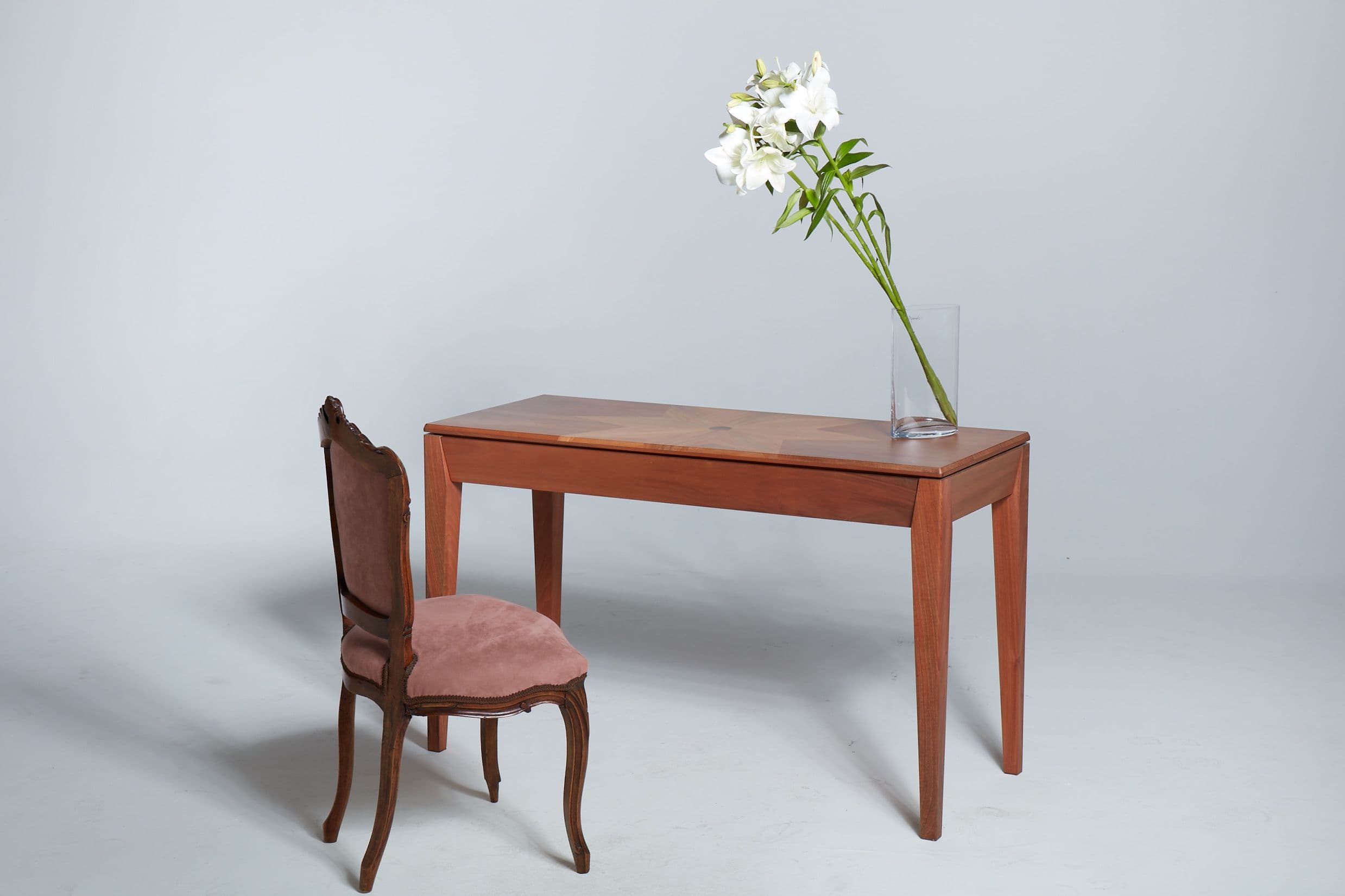How do you approach the restoration of antique furniture like the cherry wood cabinet in the Romeo project while preserving its historical value?
The problem identified by the European Environmental Bureau reports that EU companies and consumers discard 90% of their furniture every year, and despite the high quality of some materials and the intrinsic value of used furniture, the restoration offer remains very limited, at around 6%.
At Arkitettoria, we aim to rethink used furniture, modernise it, and return it to the cycle of use as individual designer furniture. The approach we use is to transfer the principles of architecture into design. Here is a case study: the Romeo wardrobe.
First, we try to place the object in space. A large piece of furniture, originally designed for country houses in the late 19th century, becomes cumbersome in modern flats with smaller rooms and lower ceilings. Thus, it is necessary to reconceptualise the cupboard as a room, a small room, for example, for work or a home office. This use is more relevant than ever, given the growing popularity of the New Work trend in Europe.
For the exterior, we adopt a conservative approach: the precious century-old cherry wood is carefully restored and preserved in its entirety. In contrast, for the interior, which is less valuable and has been damaged by time and daily use, we take a reconstruction and replacement approach. This not only restores full functionality but also updates the piece with contemporary features such as lightweight composite materials, modern hinges, internal lighting, USB connections for computers, and finally, a clock.
Ultimately, through a careful selection of colours and finishes, we juxtapose the new and the old, striving for an aesthetic balance.
Details: 125 working hours, cost approx. €6,000, considering the wardrobe was already owned by the customer. The work was completed in Italy in 2017. We believe the wardrobe can continue to be used for the next 100 years.

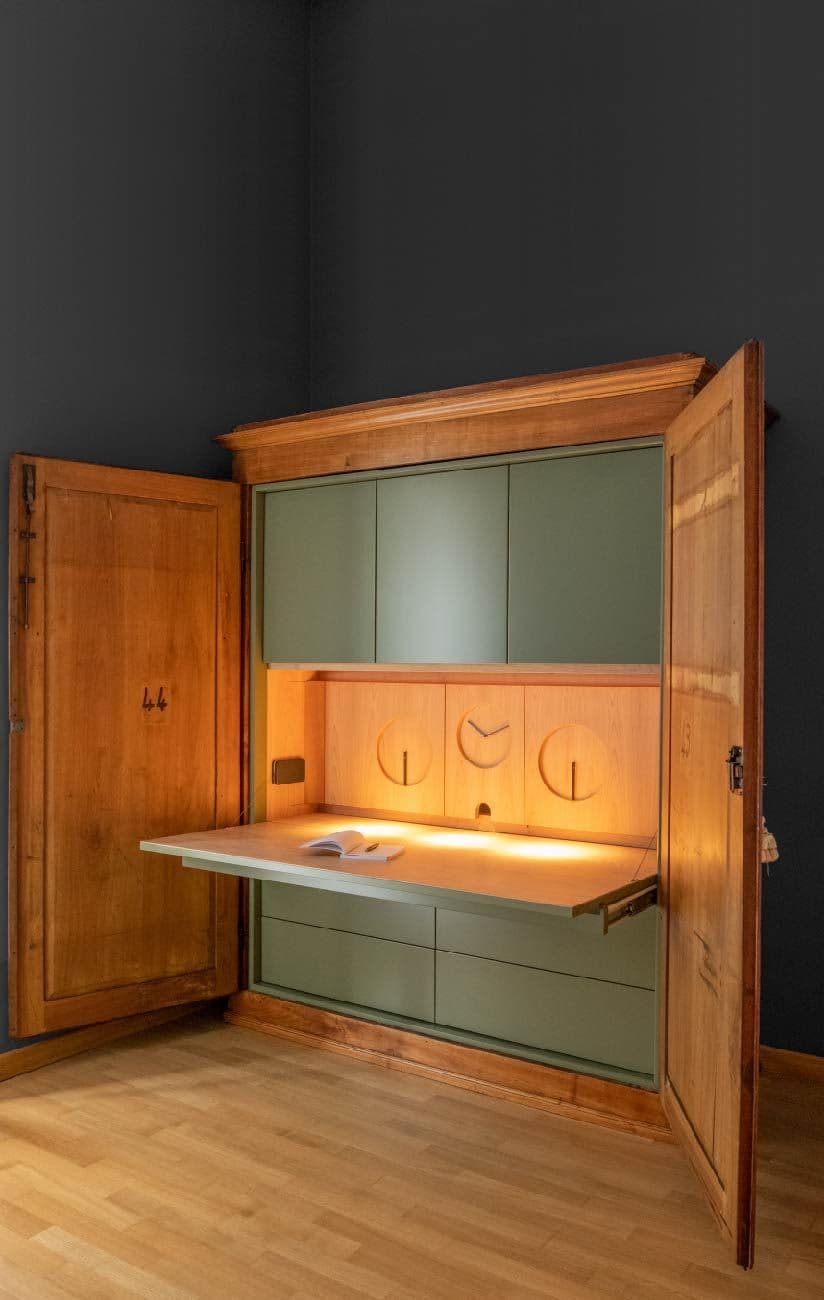
Could you elaborate on the technical challenges involved in transforming the Giuliana sofa with Alcantara Armadillo upholstery?
I must mention that there were no significant technical difficulties. We collaborated with a local artisan, Sergio, who was already familiar with the sofa and had cared for it over the years.
For this project, we made a bold stylistic and aesthetic choice by selecting a peacock blue colour and Armadillo texture to complement the dark wood and mouldings of the sofa. The Alcantara textile, known for its durability, resistance, and ease of cleaning, was chosen for its frequent use in high-end furniture and the automotive industry. The project's goal was achieved when the Giuliana sofa reclaimed its place at the centre of the living room!
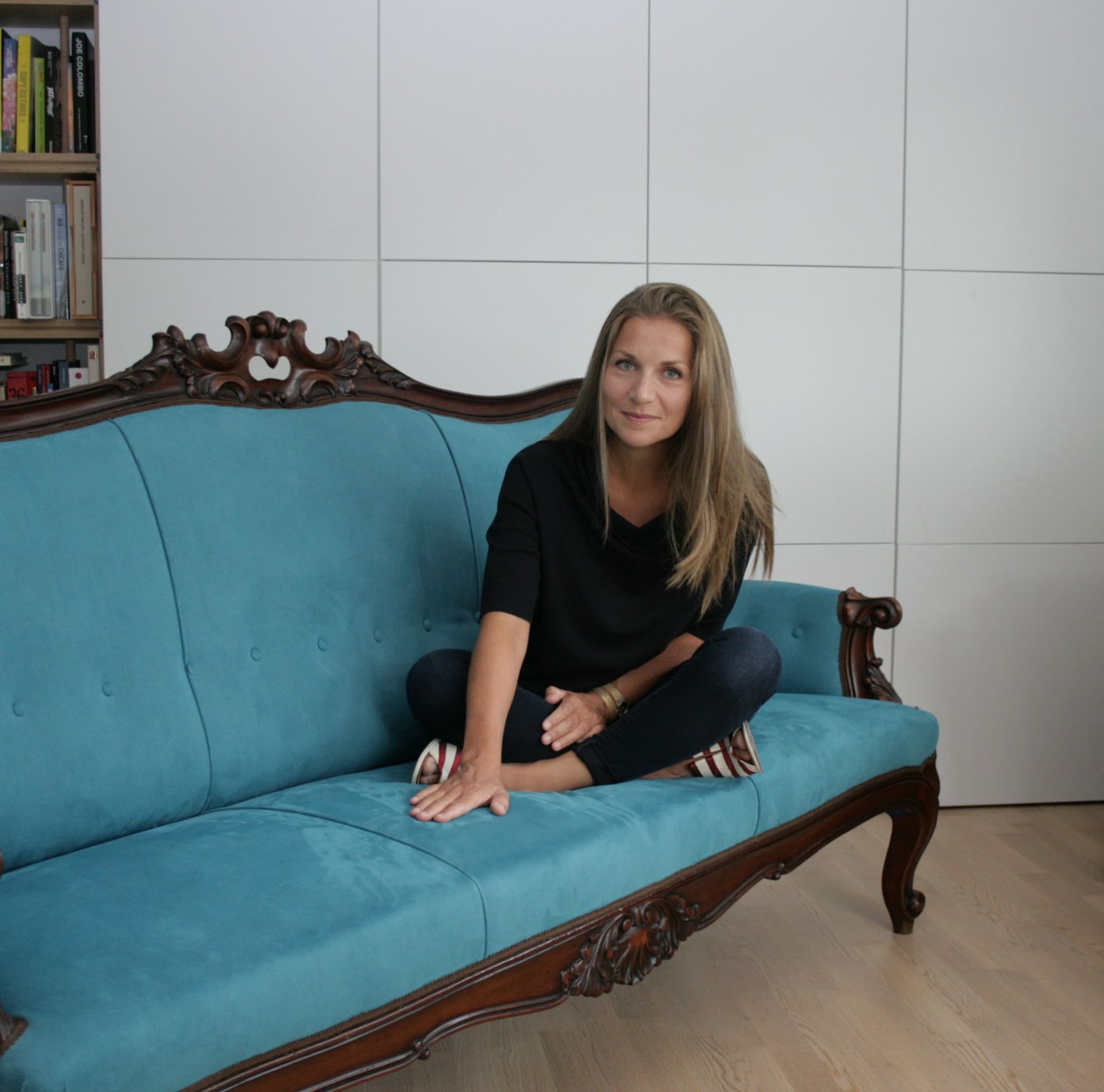
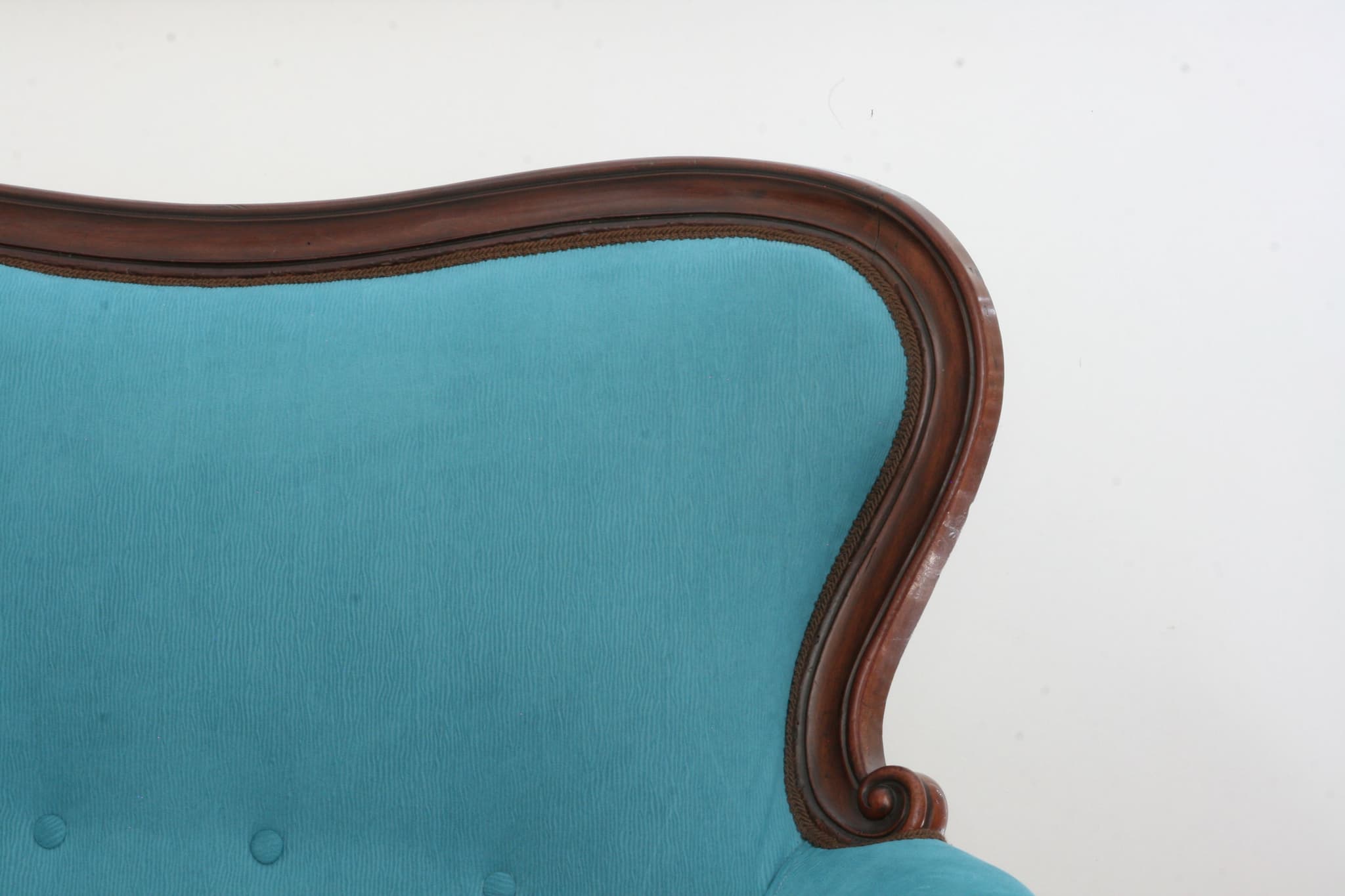
Can you describe the process of working with recycled materials such as olive wood remains for your chopping boards and the challenges you face?
Our olive wood chopping boards originated from the opportunity to repurpose leftover olive wood following the construction of a kitchen. Having followed the manufacturing process with passion, it was disheartening to see such beautiful pieces discarded as waste. To address this, we designed a shape that could adapt to the offcuts, regardless of their size or proportions. The trapezoidal sides feature two opposing inclinations, making the boards easier to lift.
The challenge ahead is finding artisans willing to dedicate time to working with these remnants. This task may appeal to small workshops or apprentices from woodworking schools.
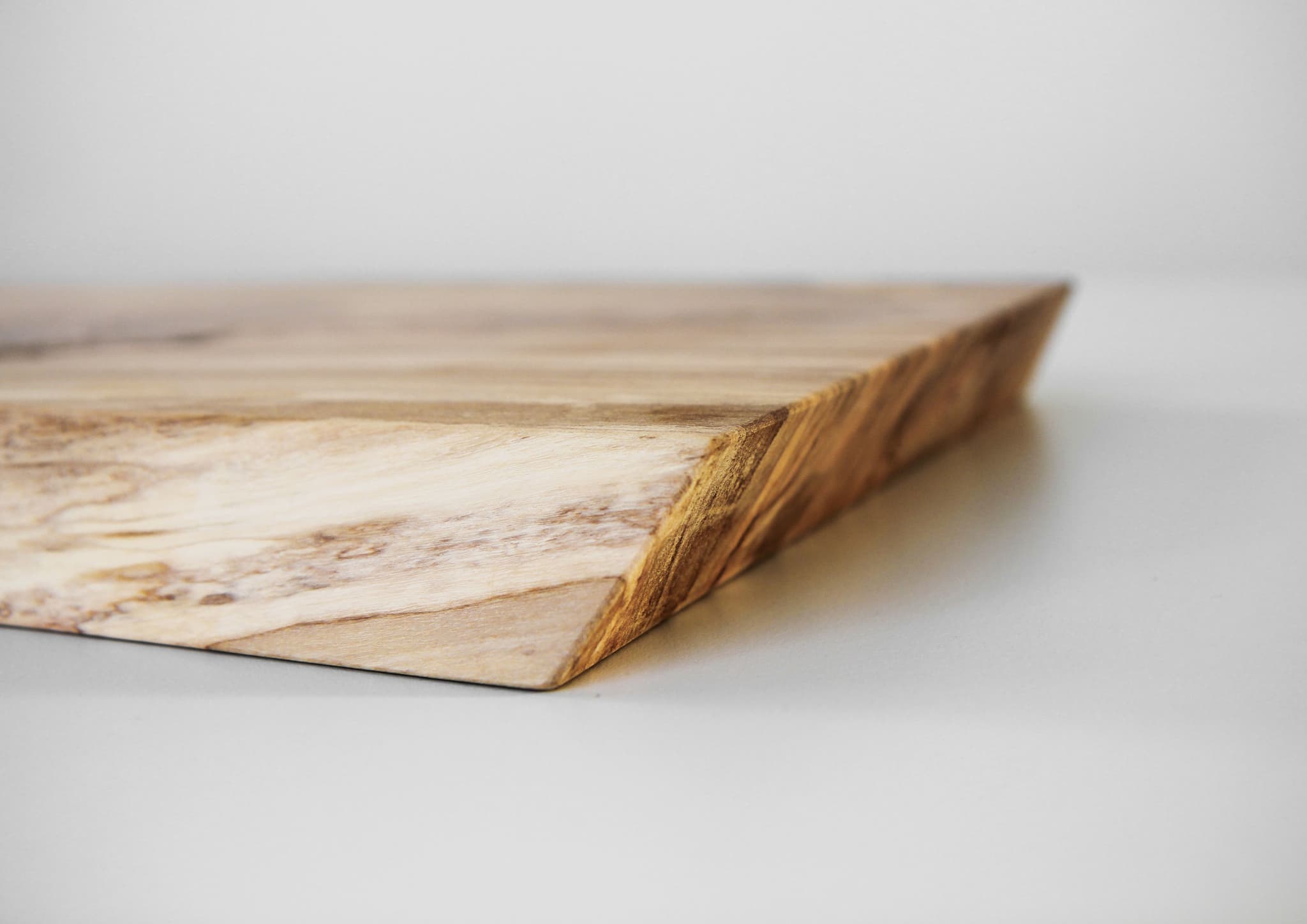
How do you achieve the unique fluorescence in your XO coasters, and what makes PERSPEX a suitable material for this design?
Perspex is a fully recyclable plastic material with the unique property of absorbing light and reflecting it from its cut edges. We first encountered this material during our architectural studies in Florence, where our professors, including members of the 1970s radical design movement like Prof. Adolfo Natalini and Prof. Remo Buti, introduced us to fascinating Perspex projects.
Several years later, we were commissioned to design coasters for a summer event. We envisioned people enjoying their cocktails by the lake, with the beach taking on a subtle fluorescent glow as the sun set. The design truly comes to life in a group setting, where the effect is amplified in numbers. This makes it particularly well-suited for corporate branding in the gastronomy and entertainment sectors.
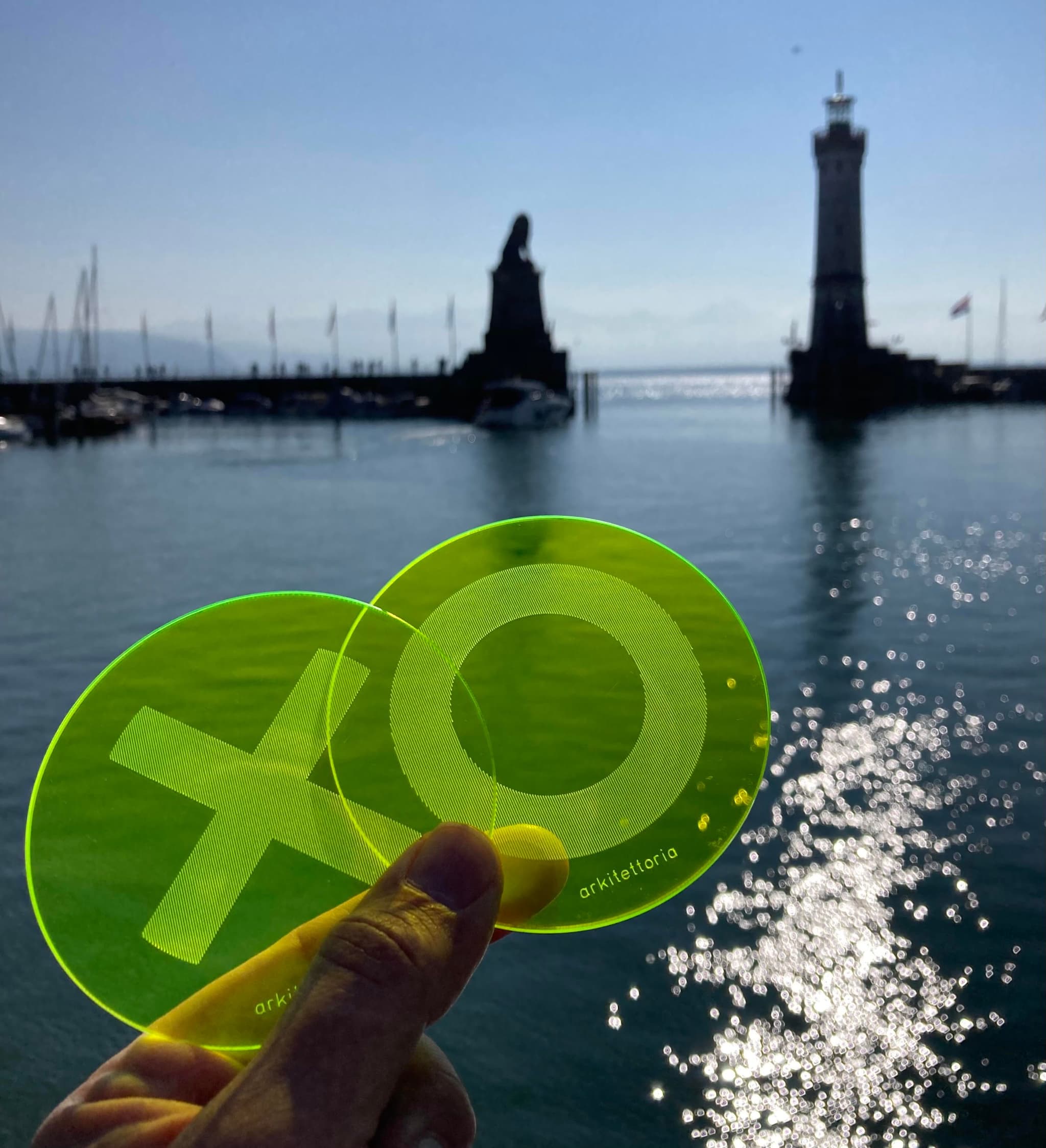
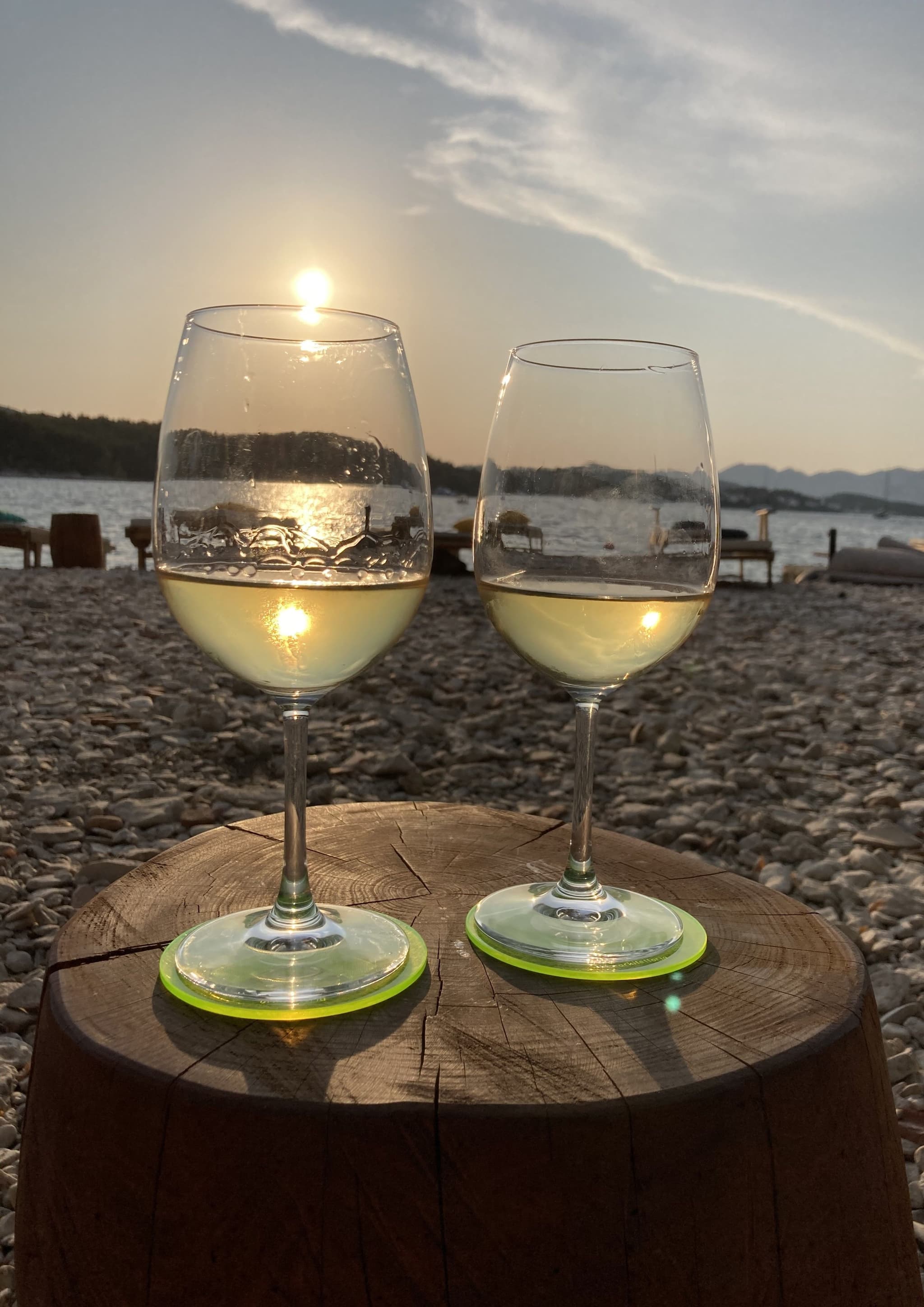
How do you ensure the structural integrity and aesthetic cohesion when combining materials like wood and glass in the Giacomo kitchen project?
Wood and glass are two materials that complement each other beautifully, a relationship we often see in architecture. In recent decades, Europe has witnessed a true renaissance in timber construction. Modern technologies now enable the construction of multi-storey wooden buildings, and large glass surfaces naturally complement these wooden façades.
In traditional domestic settings, sideboards and similar furniture were often found in kitchens. Their clear glass doors, reminiscent of home windows, serve to display items such as porcelain dishes, books, or photographs, while protecting them from dust.
The Giacomo cabinet has been refurbished with new shelves and a mint green interior, creating a striking contrast with the dark brown wood. Placing it in a contemporary kitchen proved interesting, as the flat modern surfaces accentuated the cabinet's sculptural quality, giving new life to this family heirloom.


How do you achieve the balance between form and function in your designs, especially when working with intricate materials like marble and PERSPEX?
The function of an object is important, but its form, and the harmony of its parts, contribute to its beauty. Furthermore, form is iconographic; it evokes meanings shared by the community and tells a story. To illustrate how we strive to balance form and function, I offer the example of the Apuane marble tray.
This tray, crafted from white Carrara marble, derives its beauty from its reference to classical architecture—specifically, the stone foundation of an ancient Mediterranean temple. The three steps on the front side, reminiscent of a flight of stairs, showcase the refined craftsmanship of the material.
Upon closer inspection, the two back sides feature an inverted staircase, which is not purely aesthetic but functional, providing a grip for lifting the tray. This 'reverse' staircase also allows multiple trays to be placed together to form new configurations. In this way, an aesthetic detail serves a practical purpose, achieving the balance between form and function that we seek in design.

How do you determine the best type of wood to use for each furniture piece, and what properties are you looking for in your material selection?
We are interested in the technical characteristics of materials, such as stability, strength, and durability, as well as the aesthetic aspects like grain patterns and colour nuances. The choice of wood is made in consultation with local artisans who are familiar with traditional woodworking techniques in the region where we produce, as well as the most common or most valuable types of wood suited to the project. In doing so, we aim to contribute to preserving and promoting the identity of places in the age of globalisation.
Let’s take two solid-wood tables from our collection as examples.
The make-up table Splendida is crafted from walnut wood in Tuscany. Each leg is carved from a single piece, while the 30mm thick top is constructed by gluing three 10mm layers of solid wood on top of each other, with the fibres laid orthogonally to counteract wood stresses. This construction technique minimises movement and prevents warping of the surface. The visible top layer, 10mm thick, features an intarsia* design of a diamond. Special care was taken in constructing this layer to manage wood stresses.
* Intarsia is a decorative technique in which figures or designs are created by embedding different woods or materials into the surface.
The second project takes us to Austria, specifically to the Vorarlberg region, renowned for its tradition of craftsmanship and architecture. Here, in collaboration with the Schmiedinger Möbelbau joinery, we created the Andante table, made from solid oak and black steel, which pays homage to traditional regional tables.
To ensure that wood and steel—materials with different thermal expansion characteristics—could coexist harmoniously, we arranged and glued the screeds, each with a thickness of approximately 50 mm, in a manner that anticipated and allowed for expansion precisely where we intended it. The tabletop was left free to "move" in accordance with the natural tendencies of wood to expand and contract based on temperature and humidity.
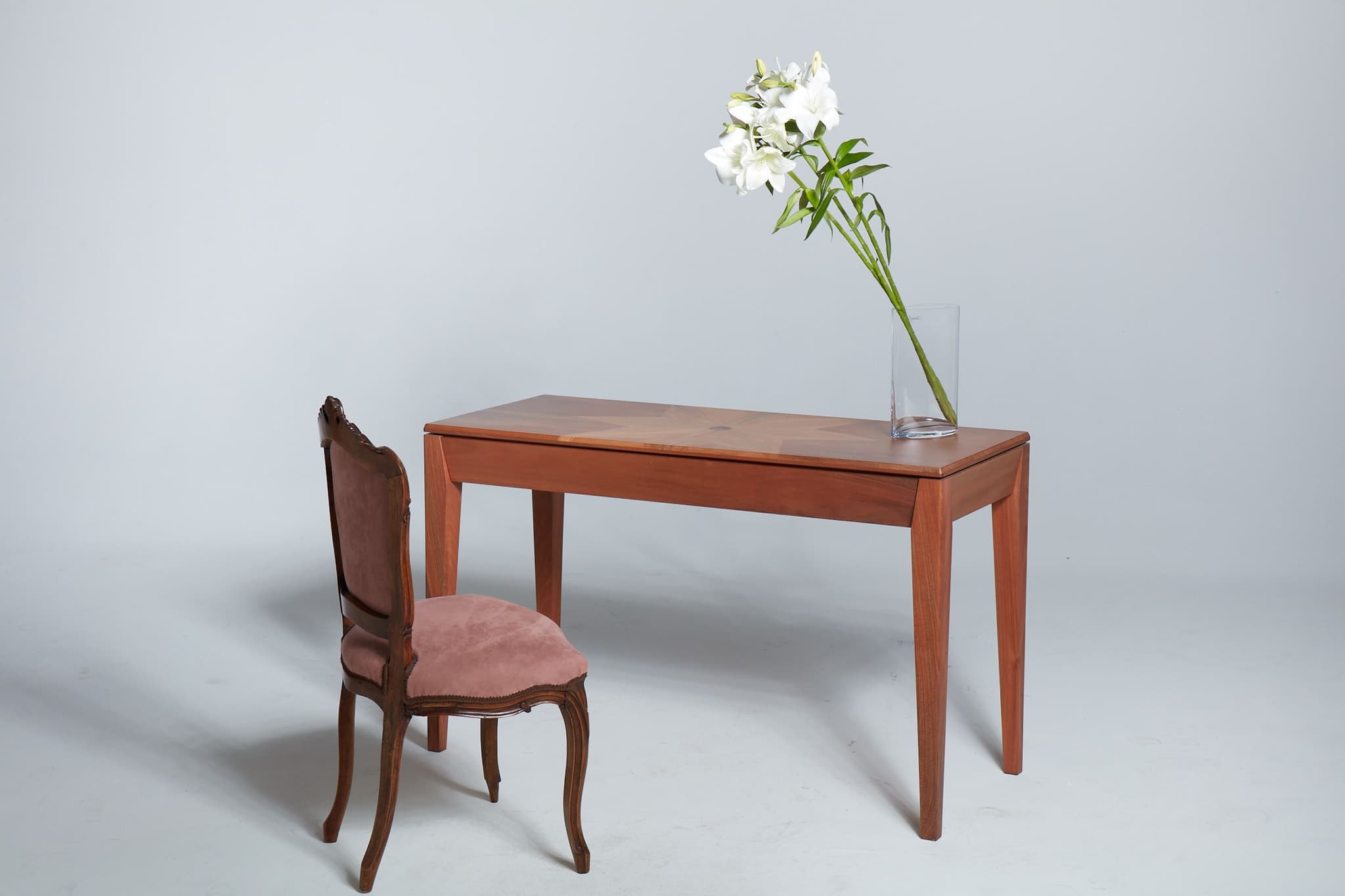
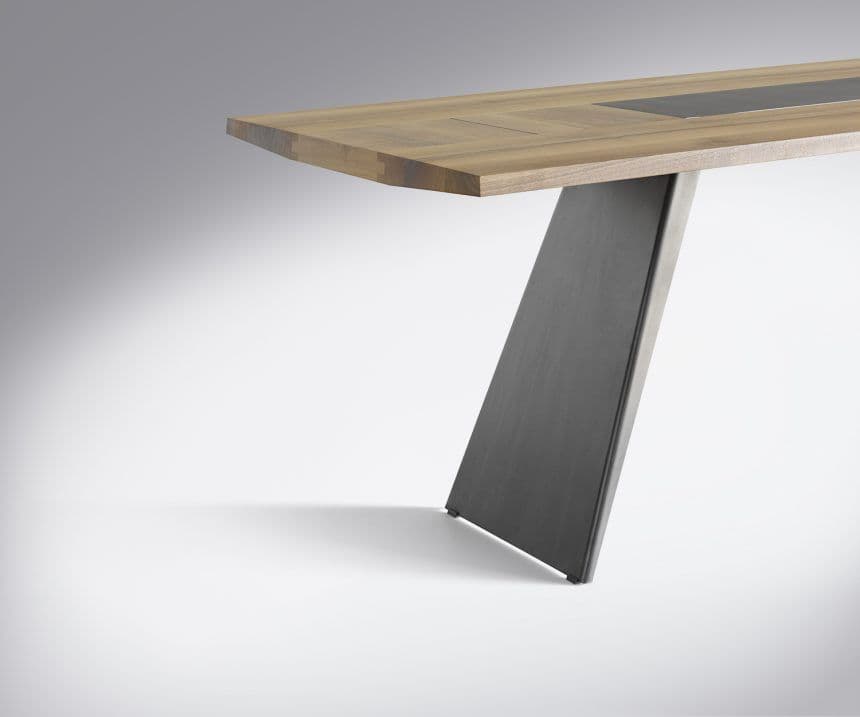
What is the most rewarding aspect of preserving and promoting European craft heritage through your projects?
The most rewarding aspect of our work is undoubtedly the enthusiasm we encounter in people. From the older generations, who are happy to share the stories of their times, show old photographs of their family sofa, and witness its rebirth through modernisation, to the younger customers and artisans who appreciate the craftsmanship and engage in the restoration process. These individuals express their personality through home furnishings, seeking unique objects with a story to tell. They appreciate our designs and recognise our commitment to research.
How do you plan to adapt your designs to address the evolving needs of modern living spaces, and what future trends do you foresee influencing your work?
Modern living spaces, such as urban flats with open layouts, require furniture that can optimise space. This includes modular systems that can adapt to various configurations. Customers are increasingly favouring quality objects that endure over time, characterised by recognisable designs and options for customisation.
Our research addresses three key trends and needs of our time: environmental and social sustainability, digitalisation as a sharing economy, and individuality.
The digital revolution allows for the storage and transmission of data worldwide, instantaneously and at minimal cost. In this context, our catalogue of projects can be made available to a diverse range of users, while the execution of restorations can be entrusted to local artisans. This approach enables us to integrate all three trends effectively.
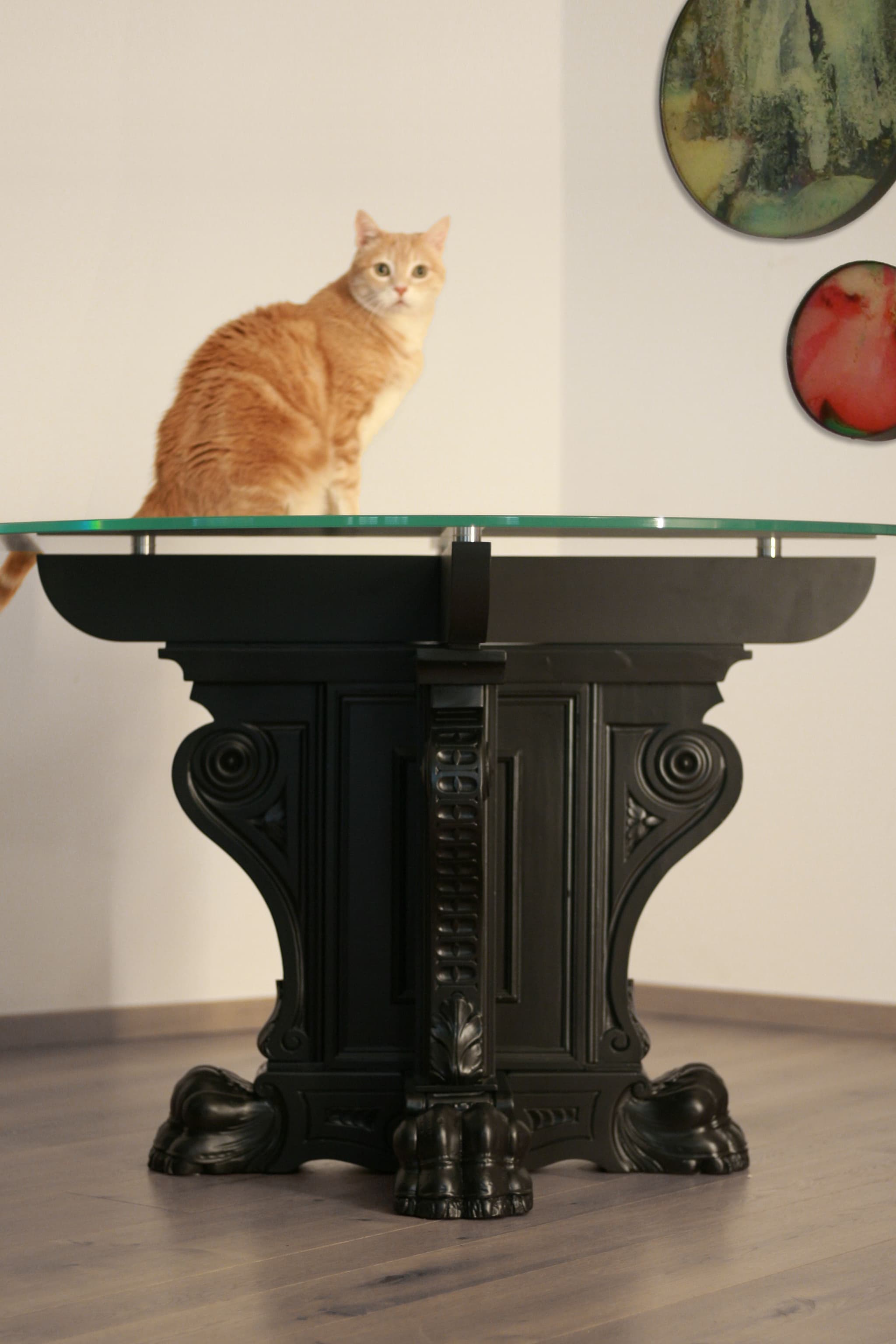
In your upcoming restoration projects, such as the Giuliana sofa, what new techniques or materials are you excited to experiment with to further elevate the character and longevity of these heirloom pieces?
In our upcoming restoration projects, we are considering using organic textile materials, both rigid and flexible, to cover or even reconstruct parts of the furniture.
We would like to express our interest in drawing inspiration from the vast community at tocco.earth and are always open to new collaborations. Our aim is to apply new materials in our projects, build prototypes, and thus test their feasibility as well as calculate their costs. If anyone is interested, please feel free to contact us!
